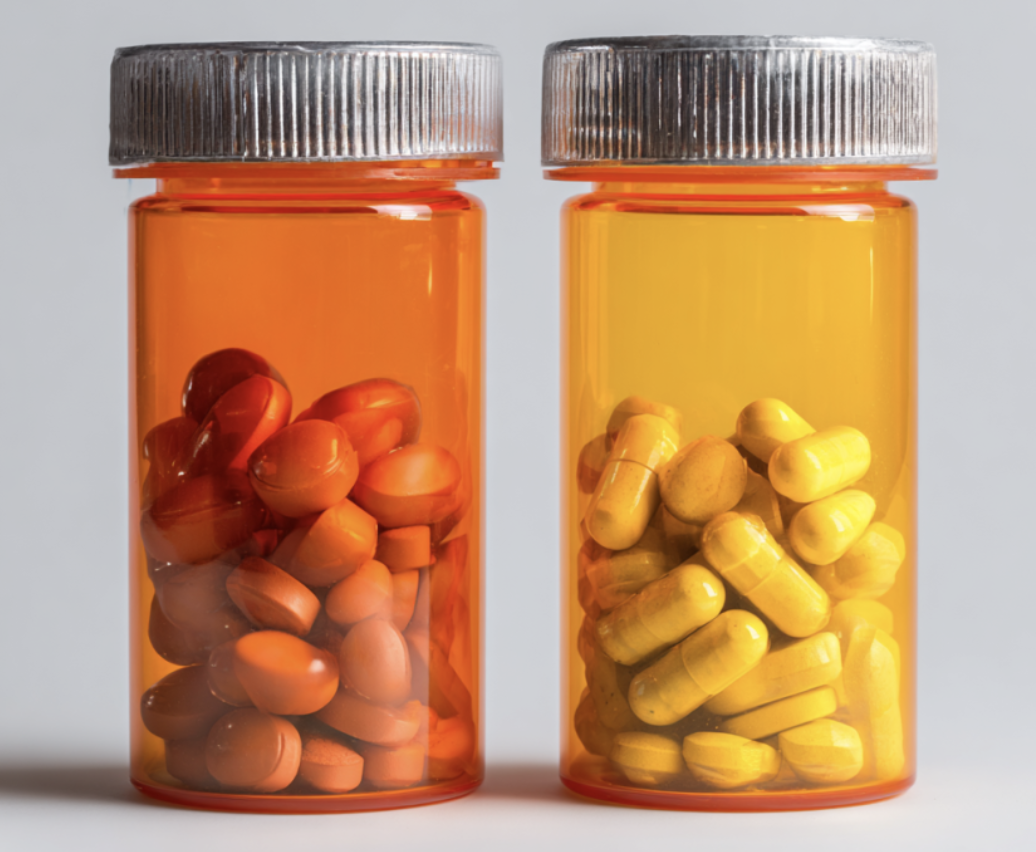Can MAT patients safely take Adderall? For patients undergoing Medication-Assisted Treatment (MAT), this is a critical question. Combining Adderall with MAT medications involves considerations of potential risks and medical supervision. This article delves into the safety, guidelines, and risks associated with this combination.
Key Takeaways
- Mixing Adderall with MAT medications like Suboxone or Methadone carries significant risks, including potential cardiovascular issues and heightened anxiety, necessitating careful medical supervision.
- Adderall may be appropriately prescribed for MAT patients with ADHD, but this requires comprehensive assessment and monitoring to balance treatment benefits against the potential for misuse and relapse.
- Alternatives to Adderall, such as non-stimulant medications and cognitive-behavioral therapy, should be considered to manage ADHD symptoms in MAT patients to mitigate risks associated with stimulant use.
Is it safe to mix Adderall with MAT medications like Suboxone or Methadone?
Mixing Adderall with MAT medications like those compared in suboxone vs methadone is a significant concern due to their distinct pharmacological actions. Although no direct interactions are known between Adderall and Suboxone, this doesn’t guarantee the combination is risk-free. Adverse interactions such as heightened anxiety, increased heart rate, or other cardiovascular issues should be considered when mixing suboxone.
Combining these medications can complicate managing the conditions each drug addresses. Suboxone treats opioid addiction and is also being explored for other conditions such as suboxone for alcohol, while Adderall is a CNS stimulant for ADHD. An opioid antagonist can be crucial in understanding the nuanced interactions between these two drugs, ensuring patient safety and treatment efficacy. Taking suboxone and adderall together requires careful consideration of suboxone and adderall.

Adderall and Suboxone interactions
Consulting healthcare providers before combining Adderall and Suboxone is advisable due to individual response variability. Despite no significant suboxone interactions being formally documented, caution is still advised because:
- Adderall is a stimulant.
- Suboxone is a partial opioid agonist.
- Using Adderall with Suboxone can cause heightened anxiety.
- It can also lead to an increased heart rate.
Suboxone doesn’t block Adderall’s effects but can lessen its impact due to its calming nature. This combination is generally discouraged unless under strict medical supervision, often after taking suboxone to deter suboxone misuse. Careful monitoring remains necessary, especially due to the potential for increased heart rate and elevated blood pressure. Adderall suboxone can complicate this situation further, highlighting the risks of suboxone misuse.
Adderall and methadone interactions
Combining Adderall with methadone introduces its own challenges. Methadone, a long-acting opioid, manages cravings in opioid use disorder, while Adderall raises norepinephrine and dopamine levels. Combining these drugs can elevate the risk of serotonin syndrome, characterized by confusion, hallucinations, and severe changes in blood pressure. It is important to understand how Adderall interact with other medications.
Close monitoring is essential to prevent adverse effects like overdoses or severe respiratory distress when using both medications. Some studies suggest ADHD patients may have better MAT retention with Adderall, but potential cardiovascular risks remain significant. Both drugs can enhance heart rate and blood pressure, highlighting the need for medical supervision.
When might Adderall be medically appropriate for MAT patients?
Adderall may be prescribed for MAT patients with a concurrent ADHD diagnosis, if the benefits outweigh the misuse risks. Dual diagnosis scenarios are not uncommon, requiring careful psychiatric and addiction medicine oversight to manage both conditions effectively. Patients may also take adderall as part of their treatment plan.
Monitoring is crucial, as ADHD and opioid use disorder (OUD) present unique challenges. Prescribing Adderall should involve a comprehensive assessment of the patient’s medical history, treatment goals, and potential risks.

Diagnosing ADHD in patients with OUD
Patients with opioid use disorder (OUD) often have a higher prevalence of ADHD, requiring careful assessment for proper diagnosis. Clinicians must distinguish legitimate ADHD symptoms from substance-induced behaviors and substance abuse issues, including opioid dependence, using DSM-5 criteria. This is vital, as approximately 46% of patients with OUD reported probable ADHD symptoms in childhood.
Earlier onset of OUD, lower educational attainment, and higher impulsivity are significantly associated with co occurring adhd presence in individuals with OUD. The overlap of ADHD and opioid intoxication symptoms complicates diagnosis, making comprehensive assessments essential.
Clinical guidelines for stimulant prescribing in MAT
Clinical guidelines recommend close monitoring when prescribing stimulants like Adderall during MAT to mitigate misuse risks. Evaluating ADHD symptom severity and their impact on functioning is recommended before prescribing these medications.
Prescription amphetamines (PAs) are linked with enhanced retention in buprenorphine treatment for OUD patients. Clinicians must:
- Balance ADHD treatment benefits against misuse risks
- Follow evidence-based protocols
- Monitor for signs of stimulant misuse
- Conduct comprehensive assessments
- Perform ongoing evaluations
What are the risks of prescribing Adderall to MAT patients?
Adderall addiction has become a growing concern, particularly among individuals without ADHD, raising red flags when prescribed to MAT patients. As a Schedule II controlled substance, Adderall’s adderall abuse and adderall addiction potential cannot be overlooked, especially considering the role of amphetamine salts.
Major risks include:
- Relapse
- Drug diversion
- Misuse potential
- Cardiovascular/neurochemical instability
Clinicians must understand these risks to ensure Adderall’s safe and effective use in MAT patients.
Risk of relapse and stimulant misuse
MAT patients may misuse Adderall, increasing their relapse risk into substance use disorders due to its stimulant effects. Adderall’s euphoric effects heighten opioid misuse likelihood among individuals recovering from opioid use disorder and may lead to the use of illicit stimulants.
Regular monitoring and individualized care strategies are vital to mitigate relapse risk for MAT patients prescribed Adderall. Psychological dependency on Adderall and physical dependence are significant concerns, as patients may feel unable to perform tasks without it, increasing misuse risk.
Cardiovascular and neurocognitive side effects
Adderall can cause serious cardiovascular issues, posing additional risks for MAT patients with compromised health. Long-term Adderall use can elevate the likelihood of serious cardiovascular issues, including heart attacks and strokes.
Adderall misuse can disturb normal sleep patterns, contributing to insomnia and fatigue. Chronic use, especially at high doses, can lead to psychological disturbances like anxiety or paranoia. Potential neurocognitive side effects, including cognitive impairments, underscore the need for careful monitoring of adderall xr.
Alternatives to Adderall for ADHD in MAT patients
Non-stimulant options for ADHD treatment are crucial, particularly for those with a history of substance use. Non-stimulant medications like bupropion and atomoxetine are viable alternatives with lower abuse potential.
Behavioral interventions like cognitive-behavioral therapy and executive functioning support can significantly manage ADHD symptoms in MAT patients. These approaches offer comprehensive support to treat ADHD and attention deficit hyperactivity disorder without the risks associated with stimulant medications.

Non-stimulant medications (e.g., atomoxetine, bupropion)
Atomoxetine, a non-stimulant medication, targets norepinephrine to manage ADHD symptoms and is often referred to as an effective ADHD medication. It’s often preferred for patients with a history of substance misuse due to its lower abuse potential.
Bupropion, primarily an antidepressant, is sometimes used off-label for ADHD due to its effects on dopamine. Both medications offer alternatives to traditional stimulants, reducing relapse and misuse risks in MAT patients.
Cognitive-behavioral therapy and executive functioning support
Cognitive-behavioral therapy (CBT) benefits ADHD patients by addressing behavioral issues and emotional regulation. Executive functioning coaching helps ADHD individuals develop skills for organization, planning, and time management.
Support strategies focused on organization and time management are essential for treating ADHD in MAT patients. These non-pharmacologic interventions can significantly improve executive functioning skills, complementing medication treatments.
How clinicians manage Adderall use in MAT treatment plans
Clinicians often take a cautious approach when integrating Adderall into MAT due to its misuse potential. Evaluating the benefit-risk ratio of combining Adderall with MAT medications is crucial, considering potential recovery impacts.
Integrated care teams and frequent follow-ups are essential for effective management, ensuring comprehensive support for both mental health issues and substance use disorders.
Prescription monitoring and tapering strategies
Regular prescription monitoring is crucial for assessing the patient’s response to Adderall and ensuring treatment adherence to prescription medication. Tapering strategies may gradually reduce Adderall dosage to the prescribed doses, minimizing risks like relapse or complications similar to suboxone withdrawal.
Urine toxicology tests can help confirm adherence to prescribed Adderall therapy in MAT patients. Clinicians often prefer sustained-release Adderall formulations to reduce abuse potential compared to immediate-release versions.
Integrated care teams and frequent follow-ups
Integrated care teams of addiction specialists and mental health professionals enhance the management of patients on Adderall during MAT. Frequent follow-ups help clinicians adjust treatment plans based on the patient’s evolving needs and monitor for stimulant misuse signs.
Regular communication between care team members helps quickly address complications or concerns during a patient’s treatment. Integrating peer support specialists into care teams can improve treatment retention and outcomes for patients with opioid use disorder and help to treat opioid.
Patient perspectives and success stories
Patients on stimulant prescriptions for ADHD who also have persons receiving buprenorphine treatment show improved adherence to their opioid use disorder therapy. Some individuals report that stimulant medications enhance their focus and overall quality of life during opioid use disorder treatment to treat opioid addiction.
Success stories indicate the following:
- Despite potential risks, many patients balance stimulant use while maintaining recovery from substance use.
- Patients have shared experiences where prescribed stimulants did not lead to relapse.
- Careful monitoring can mitigate risks associated with stimulant use.
Bottom Line: Should Adderall be part of a MAT recovery plan?
Integrating Adderall into a medication-assisted treatment plan requires careful consideration of the patient’s medical history and the potential for addiction. While Adderall can be beneficial for patients with a legitimate diagnosis of ADHD, it must be monitored closely to prevent misuse. There are concerns about the risk of relapse when stimulants like Adderall are included in a recovery plan, particularly for individuals with a history of substance use disorder.
Comprehensive treatment strategies that address both behavioral and psychological aspects of addiction treatment can enhance the effectiveness of including Adderall in MAT. Healthcare professionals may suggest alternatives to Adderall or other medications if there are significant risks associated with its use in the context of treat addiction recovery.
Ultimately, the decision should be made on a case-by-case basis, ensuring that all potential benefits and risks are carefully weighed.
FAQs about Adderall use during MAT
Can Adderall make Suboxone stop working?
Suboxone does not inhibit the effects of Adderall, though it may diminish the stimulant's efficacy due to its calming effects. Hence, while they can be used concurrently, the impact of Adderall may be reduced.
Will taking Adderall affect my MAT compliance?
Taking Adderall, when prescribed and monitored properly, should not adversely affect your MAT compliance; however, diligent medical supervision is crucial to avoid misuse and ensure effective treatment outcomes.
Can I get kicked out of my MAT program for Adderall use?
You cannot be dismissed from your MAT program for Adderall use if it is prescribed and used properly. However, it is essential to maintain open communication with your treatment team.
What are the risks of taking Adderall with methadone?
The risks of taking Adderall with methadone include an increased likelihood of serotonin syndrome and cardiovascular complications. It is crucial to ensure close monitoring by healthcare providers in such cases.
Are there any alternatives to Adderall for treating ADHD in MAT patients?
Absolutely, non-stimulant medications such as atomoxetine and bupropion, along with cognitive-behavioral therapy, serve as effective alternatives for treating ADHD in MAT patients. These options can help manage symptoms without the risks associated with stimulant medications.
















